#ida b. wells-barnett
Text

Our watchword has been “the land of the free and the home of the brave.” Brave men do not gather by thousands to torture and murder a single individual, so gagged and bound he cannot make even feeble resistance or defense. Neither do brave men and women stand by and see such things done without compunction of conscience, nor read of them without protest.
—Ida B. Wells-Barnett, political journalist, teacher, 1900
022 Ariana Desire
1 note
·
View note
Text

THE ONLY TIMES AN AFRO-AMERICAN WHO WAS ASSAULTED GOT AWAY HAS BEEN WHEN HE HAD A GUN AND USED IT IN SELF-DEFENSE.— Ida B. Wells-Barnett
28 notes
·
View notes
Photo

Ida B. Wells-Barnett by Sallie E. Garrity, c.1893 (National Portrait Gallery)
#ida b wells#fashion history#historical fashion#gilded age#1890s#19th century#turn of the century#1893#historical photography#albumen print#albumen silver print#silver print#national portrait gallery#smithsonian institution
1K notes
·
View notes
Text

Ida B. Wells and her husband, Ferdinand L. Barnett had four children, Charles, Herman, Ida Jr. and Alfreda. They are pictured here in the early 1900s.
Born into slavery in Holly Springs, Mississippi, Wells was freed by the Emancipation Proclamation during the American Civil War. At the age of 16, she lost both her parents and her infant brother in the 1878 yellow fever epidemic.
Wells later became an anti-lynching advocate doing so as a journalist for several newspapers including her own. A civil rights activist, Wells was one of the founders of the National Association for the Advancement of Colored People (NAACP) in 1909.
African Archives Instagram
66 notes
·
View notes
Text

In this letter of April 26, 1918, Ida B. Wells-Barnett writes to Pres. Wilson asking him to revoke the order urging Black officers and soldiers to refrain from going into public places where their presence is resented.
Record Group 120: Records of the American Expeditionary Forces (World War I)
Series: Records of Divisions
File Unit: 322.9 92nd Division
Transcription:
[solid bold underline]
[italicized] The Negro Fellowship League
MRS. IDA B. WELLS-BARNETT, PRES.
3005 [italicized] State St. [italicized] Phone Calumet 6297
[italicized] Chicago
[solid bold underline]
[hand stamp] RESPECTFULLY REFERRED FOR CONSIDERATION
[illegible signature]
Sec'y to the President
Chicago, Ill., April 26, 1918
[hand written] President Wilson
White House
The Negro Fellowship League calls upon you to countermand Gen. Ballou's Bulletin No. 35 for 92nd Division, Camp Funston, Kansas, enjoining officers and soldiers to refrain from going into public places where their presence is resented because of Color. His dictum that loyal public service is putting pleasure above general good is not applied to white soldiers, destroys all civil rights, causes fresh discrimination, fosters race prejudice, humiliates our race, degrade the army uniform.
No order so vicious or undemocratic has been issued in any armies fighting Germany. Protect American soldiers in Democracy at home before sending them abroad in Democracy's War.
[hand stamp] ASSISTANT AND CHIEF CLERK MAY - 1 1918 WAR DEPARTMENT
[hand stamp] THE ADJUTANT GENERAL'S OFFICE RECEIVED MAY 2 1918
NEGRO FELLOWSHIP LEAGUE
Ida B. Wells-Barnett
[underline]
President
[hand stamp] Received A.J.O. May 2 1918
[hand stamp] May 3 1918
#archivesgov#April 26#1918#1910s#World War I#WWI#Ida B. Wells#Negro Fellowship League#Woodrow Wilson#Black history#African American history
55 notes
·
View notes
Text
I wrote this paywalled poem after looking at a photograph of Ida B. Wells, then Ida B. Wells-Barnett, and her children. I wrote it using the form of the Baptist Church wedding vows, working through the mending of Ida B. Wells' recording and archiving of atrocities, her own wounds, and the core of her intimate life.
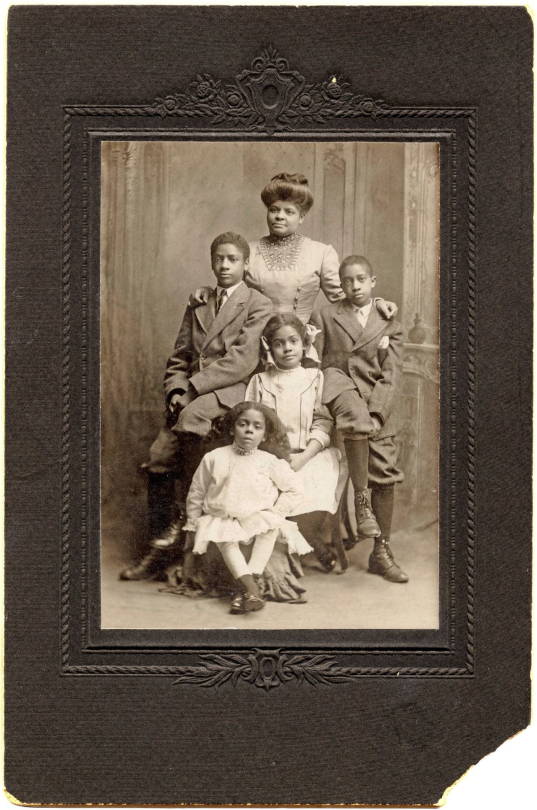
Ida B. Wells-Barnett with her children, 1909
Those archival photographs both visually describe the poem. Here is an excerpt to whet your appetite:
I, severed marrow, take thee, a furling in flux, to be a debris of sort and a remnant of glare, and before the collapsed heroine of a fallen tragedy and the industrious recording of every child there is, I promise to glide your knots and rinse you glassy.
5 notes
·
View notes
Text
MOGAI BHM- Day 2!
happy BHM! today i’m going to talk about the history of prominent Black organizations! throughout the history of America, Black people have banded together to confront the racism and anti-Blackness that lies at the heart of so many American organizations, by forming their own organizations! Many of these organizations have led to advancements, progress, and change, so I’m going to be giving a run down on the history and impact of a few of these key groups!
The NAAL-

[Image ID: A newspaper clipping. The clip is a black-and-white photo of a fairly large group of people, most Black and some white, all grouped together on the steps of a brick building, posing for a group photo. They are all dressed in semi-formal clothing. There are two captions of the photo, one above and one below. The top caption reads: “Members of the Afro-American Council, in session at St. Paul.” The bottom caption reads: “Rt. Rev. Alexander Walters of New Jersey, is in the center of the front row, and Booker T. Washington stands at his right. Mrs. Ida Wells Barnett stands at President Walter’s left.” End ID.]
The first major Black civil rights organization that formed in America was the Afro-American League (the AAL), which changed its name to the National Afro-American League (the NAAL) two years later, in 1890. The AAL was formed by two men- an editor at the New York Age named Timothy Thomas Price, and Bishop Alexander Walters of the African Methodist Episcopal Zion Church in Washington, D.C.
The NAAL was primarily formed to address issues of Black citizenship, especially in the South (though it had branches in the North as well). Although the 14th and 15th Amendments had technically expanded the protections of citizenship to Black Americans, the reality was that those protections were rarely actually enforced. Fighting the legality of Jim Crow laws was therefore the primary goal of the NAAL, and it did see some initial success. In one case, Fortune was refused service at an NYC bar, and his case which he brought against the bar was successful. Although this success was short-lived, with the NAAL being forced to disband in 1893, its formation marked the first major Black civil rights organization in America.
The Niagara Movement and the NAACP-

[Image ID: A black-and-white photo of a fairly large group of people sitting and standing together for a group photo in front of a building and beneath a white banner which says “Welcome, NAACP- June 26, Headquarters, July 2.” End ID.]
Today, the NAACP is still considered one of, if not the most, large and influential civil rights organizations in America. It has a rich history, one that starts with another organization- the Niagara Movement.
A very well-known figure from Black history, W. E. B Du Bois was a very prominent activist who advocated strongly against ideas that Black Americans had to be pallatable to white Americans in order to be acceptable. He believed that Black Americans did not have to be toned down to acceptable parts in order to deserve respect, and that was a key spark in his founding of the Niagara Movement with co-founder William Monroe Trotter. A demonstration of this is in the “Declaration of Principles” that it drafter, which stated: “We refuse to allow the impression to remain that the Negro-American assents to inferiority, is submissive under oppression and apologetic before insults.”
After Du Bois, Trotter, and a group of Black teachers, scholars, and clergy were denied access to hotels in New York, they formed a group in Niagara in 1903, where they aimed to powerfully demand equal economic, educational, and suffrage rights for both Black men and Black women. The Niagara Movement met until 1908, when co-founder Trotter left to form his own group because he disagreed with Du Bois’s desire to include women in the Niagara Movement.
However, Trotter’s departure was not the major event that spurred the disbanding of the Niagara Movement- it was the realization that a much stronger organization was needed in response to the increased racial violence that was breaking out across the country, culminating in the violent race riots of Springfield Illinois. W. E. B Du Bois moved from the Niagara Movement to become a founding member of the National Association for the Advancement of Colored People, the NAACP.
After the Springfield race riot, a group of white liberals issues a call for racial justice which was signed by 60 people and released on the centennial anniversary of Abraham Lincoln’s birth- and thus marked the formation of the NAACP. The NAACP had, and still has, a strong focus on local activism and organization. By 1919, its growth had blossomed rapidly, with 90,000 members and 300 local branches across the country.
Very early on, the NAACP established its legal premises and prowess, through key legal victories like that of the 1910 case Guinn v. States, which successfully challenged a racist voting regulation in Oklahoma. In 1915, it also successfuly promoted great backlash against the movie Birth of a Nation, which was demeaningly racist and glorified the KKK.
A key focus of the NAACP was to fight against lynching. Although its many legal battles against lynchings were sadly unsuccessful due to suppression and filibusters from Congress and the Senate, the NAACP was able to reduce public lynchings and their influence through a report they published called "Thirty Years of Lynching in the United States, 1889-1919.”
Another key figure in the NAACP’s history is Walter. F. White, a Black man whose efficacy as leader of the NAACP was unparalleled. He conducted essential research on lynching and succeeded in blocking the nomination of a segregationist judge to the Supreme Court. In 1930, the NAACP released the Margold Report, which became the basis for the successful reversal of the separate-but-equal doctrine that had governed public facilities since Plessy v. Ferguson (1896).
Throughout the Great Depression, which severely hurt Black Americans and their communities, the NAACP fought for racial equity among labor unions and successfully influenced FDR to create thousands of jobs for Black Americans.
The NAACP continued to gain great legal victories throughout the next few decades, and were active during the Civil Rights Movement of the 1950s and 60s. One key function they served during this time period was providing legal representation to Black Americans who had been arrested during protests, sit ins, and notably, hundreds of freedom riders (which will be discussed in another post this month). Under the leadership of Roy Wilkins, the NAACP successfully organized the famed March on Washington of 1963 as well as the passing of the Civil Rights Act of 1964.
The NAACP continued, as it does to this day, to be at the forefront of anti-racist activism in America, and is to this day a thriving, influential civil rights organization.
The National Urban League-

[Image ID: A black-and-white photograph of two men, one white and one Black, both in the same attire of a black suit with a white shirt, sitting together at a table cluttered with microphones for a press conference. They are with the National Urban League, whose symbol, and equal sign inside a white circle, is on a flag-like banner behind the two men beneath the words “Urban League”. End ID.]
In 1910, a group known as the National Urban League (the NUL) was formed as a merger of three smaller civil rights groups to become one of the most notable civil rights organizations in the country. Its first leader was a man by the name of George E. Haynes, who established the guiding principles of the NUL.
Headquartered in New York City, the NUL formed as a way to help Black Americans who had migrated north, to adjust to life in the North and to advocate for themselves in their lives, especially in terms of economic and social development. The NUL offered programs to help prepare Black youth for all levels of school, promoted equitable housing for Black communities, train social workers how to help Black communities, and many other forms of helping Black Americans in northern cities find employment.
Under the leadership of Lester B. Granger, the NUL began to start tackling pressing civil rights issues like segregation. In fact, Granger played a pivotal role in influencing President Harry Truman’s decision to desegregate America’s Armed Forces in 1948, and during the 1960s it became one of five key civil rights organizations that drove the Civil Rights Movement.
To this day, the NUL remains a key organization for Black Americans- it offers job training, preparation for school and life beyond it, opportunities for housing, as well as other social initiatives.
The Brotherhood Of Sleeping Car Porters-

[Image ID: A black-and-white photograph of five Black men standing next to each other in front of a black railroad car on some train tracks. They are all dressed in the same uniform- a black bucket hat, black leather shoes, black pants, and white collared shirts underneath black button up jackets. End ID.]
A common struggle for many Black Americans in the workplace is being taken advantage of and mistreated by their employers. Therefore, labor unions have been and still are an integral part of racial justice in the workforce.
The first Black labor union to be recognized and chartered under the American Federation of Labor was formed in 1925 by renowned Black socialist and activist A. Philip Randolph as a labor union for Black workers at the Pullman Company, and railcar company. The union fought for an end to mistreatment of the Company’s Black workers, as well as for safer working conditions.
Although the union was met with strict backlash by the Pullman Company’s corporate officials, it was wildly successful, amassing 18,000 members across both America and Canada and producing activists who would go on to lead such important events as the Montgomery Bus Boycott, among others.
Congress Of Racial Equality-

[Image ID: A black-and-white photograph of five men, some white and some Black, all dressed in suits, carrying large signs in front of a store building. The first two signs say “Segregation is morally wrong!”. The third sign says “We support southern sit ins!”. The last two signs say “We walk for human dignity!” All the signs say “CORE” in smaller text at the bottom. End ID.]
One of the most important and impactful organizations of the Civil Rights Era was the Congress of Racial Equality, or CORE. It was formed by a group of Black and white students in Chicago in 1942. CORE’s initial focus was on nonviolent action, which later changed after MLK Jr’s assassination.
CORE was behind some of the most influential parts of the Civil Rights Movement- sit ins, marches, bus boycotts, and the famed Freedom Rides. CORE activists worked with Martin Luther King Jr. on the Montgomery Bus Boycott, perhaps one of the most influential parts of the Civil Rights Movement.
Another key goal of CORE was to integrate businesses and restaurants, and CORE members successfully did so in Chicago. They also focused on voting rights and worked with other organizations like the Southern Christian Leadership Conference to incentivize, empower, and protect Black voters.
When Martin Luther King Jr. was murdered, power struggles occurred within CORE as many members became rightfully disillusioned with principles on nonviolence. From this point on, CORE became dedicated to the Black Power movement and advocated for Black individualism and self-determination.
Southern Christian Leadership Conference-

[Image ID: A black-and-white image of Martin Luther King Jr. surrounded by a black-outlined white ring filled with curved black text that reads “Southern Christian Leadership Conference.” End ID.]
The Southern Christian Leadership Conference, or the SCLC, grew out of a need to coordinate and connect southern efforts towards civil rights. Dr. Martin Luther King Jr., an officer of the SCLC, became a founding member after his success with the Montgomery Bus Boycott. The SCLC formed to coordinate efforts across the South among different organizations.
The SCLC worked with other groups like the Student Nonviolent Coordinating Committee to promote forms of nonviolent protests. Although many civil rights organizations eventually evolved into Black Power movements and Black separatism, the SCLC and others initially operated through a lens of nonviolence.
Sources-
https://www.blackpast.org/african-american-history/national-afro-american-league-1887-1893/
https://www.blackpast.org/african-american-history/niagara-movement-1905-1909/
https://naacp.org/about/our-history
https://www.blackpast.org/african-american-history/haynes-george-edmund-1880-1960/
https://www.blackpast.org/african-american-history/national-urban-league-1910/
https://nul.org/mission-and-history
https://www.zinnedproject.org/news/tdih/sleeping-car-porters/
https://aprpullmanportermuseum.org/about-museum/union-history/3/
https://kinginstitute.stanford.edu/encyclopedia/congress-racial-equality-core#:~:text=Founded%20in%201942%20by%20an,in%20America's%20civil%20rights%20struggle.
https://www.thecongressofracialequality.org/the-civil-rights-movement.html
https://nationalsclc.org/about/history/
32 notes
·
View notes
Text
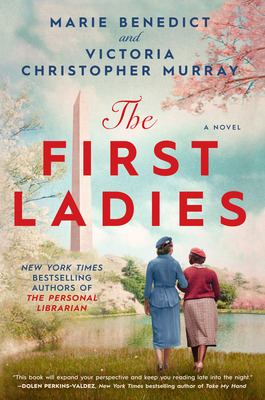
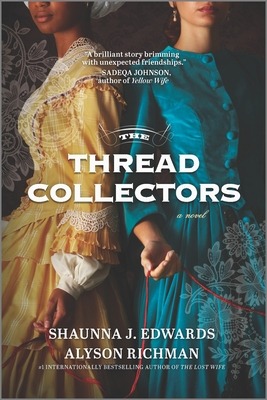


Read-Alike Friday: The First Ladies
The First Ladies by Marie Benedict & Victoria Christopher Murray
The daughter of formerly enslaved parents, Mary McLeod Bethune refuses to back down as white supremacists attempt to thwart her work. She marches on as an activist and an educator, and as her reputation grows she becomes a celebrity, revered by titans of business and recognized by U.S. Presidents. Eleanor Roosevelt herself is awestruck and eager to make her acquaintance. Initially drawn together because of their shared belief in women’s rights and the power of education, Mary and Eleanor become fast friends confiding their secrets, hopes and dreams—and holding each other’s hands through tragedy and triumph.
When Franklin Delano Roosevelt is elected president, the two women begin to collaborate more closely, particularly as Eleanor moves toward her own agenda separate from FDR, a consequence of the devastating discovery of her husband’s secret love affair. Eleanor becomes a controversial First Lady for her outspokenness, particularly on civil rights. And when she receives threats because of her strong ties to Mary, it only fuels the women’s desire to fight together for justice and equality.
This is the story of two different, yet equally formidable, passionate, and committed women, and the way in which their singular friendship helped form the foundation for the modern civil rights movement.
The Thread Collectors by Shaunna J. Edwards & Alyson Richman
1863: In a small Creole cottage in New Orleans, an ingenious young Black woman named Stella embroiders intricate maps on repurposed cloth to help enslaved men flee and join the Union Army. Bound to a man who would kill her if he knew of her clandestine activities, Stella has to hide not only her efforts but her love for William, a Black soldier and a brilliant musician.
Meanwhile, in New York City, a Jewish woman stitches a quilt for her husband, who is stationed in Louisiana with the Union Army. Between abolitionist meetings, Lily rolls bandages and crafts quilts with her sewing circle for other soldiers, too, hoping for their safe return home. But when months go by without word from her husband, Lily resolves to make the perilous journey South to search for him.
As these two women risk everything for love and freedom during the brutal Civil War, their paths converge in New Orleans, where an unexpected encounter leads them to discover that even the most delicate threads have the capacity to save us. Loosely inspired by the authors' family histories, this stunning novel will stay with readers for a long time.
The Women's March by Jennifer Chiaverini
Twenty-five-year-old Alice Paul returns to her native New Jersey after several years on the front lines of the suffrage movement in Great Britain. Weakened from imprisonment and hunger strikes, she is nevertheless determined to invigorate the stagnant suffrage movement in her homeland. Nine states have already granted women voting rights, but only a constitutional amendment will secure the vote for all. To inspire support for the campaign, Alice organizes a magnificent procession down Pennsylvania Avenue in Washington, DC, the day before the inauguration of President-elect Woodrow Wilson, a firm antisuffragist.
Joining the march is thirty-nine-year-old New Yorker Maud Malone, librarian and advocate for women’s and workers’ rights. The daughter of Irish immigrants, Maud has acquired a reputation—and a criminal record—for interrupting politicians’ speeches with pointed questions they’d rather ignore.
Civil rights activist and journalist Ida B. Wells-Barnett resolves that women of color must also be included in the march—and the proposed amendment. Born into slavery in Mississippi, Ida worries that white suffragists may exclude Black women if it serves their own interests. On March 3, 1913, the glorious march commences, but negligent police allow vast crowds of belligerent men to block the parade route—jeering, shouting threats, assaulting the marchers—endangering not only the success of the demonstration but the women’s very lives.
Inspired by actual events, The Women’s March offers a fascinating account of a crucial but little-remembered moment in American history, a turning point in the struggle for women’s rights.
Undiscovered Country by Kelly O'Connor McNees
In 1932, New York City, top reporter Lorena “Hick” Hickok starts each day with a front page byline―and finishes it swigging bourbon and planning her next big scoop.
But an assignment to cover FDR’s campaign―and write a feature on his wife, Eleanor―turns Hick’s hard-won independent life on its ear. Soon her work, and the secret entanglement with the new first lady, will take her from New York and Washington to Scotts Run, West Virginia, where impoverished coal miners’ families wait in fear that the New Deal’s promised hope will pass them by. Together, Eleanor and Hick imagine how the new town of Arthurdale could change the fate of hundreds of lives. But doing what is right does not come cheap, and Hick will pay in ways she never could have imagined.
Undiscovered Country artfully mixes fact and fiction to portray the intense relationship between this unlikely pair. Inspired by the historical record, including the more than three thousand letters Hick and Eleanor exchanged over a span of thirty years, McNees tells this story through Hick’s tough, tender, and unforgettable voice. A remarkable portrait of Depression-era America, this novel tells the poignant story of how a love that was forced to remain hidden nevertheless changed history.
#historical fiction#fiction#library books#readalikes#reading recommendations#reading recs#book recommendations#book recs#to read#tbr#tbrpile#booklr#book tumblr#book blog#library blog
7 notes
·
View notes
Text
CHRONOLOGY OF AMERICAN RACE RIOTS
AND RACIAL VIOLENCE p.2
November Wilmington, North Carolina, riot.
1898–1899
Coal mine riots at Pana, Virden, and Carterville, Illinois.
1899
Anti-Lynching Bureau is established.
Anti-Lynching League is founded.
Publication of Sutton Griggs’ first novel, Imperium in Imperio.
April Sam Hose is lynched in Palmetto, Georgia, for allegedly killing his white employer and committing sexual assault on the man’s wife.
1900
Ida B. Wells-Barnett publishes her third anti-lynching pamphlet, ‘‘Mob Rule in New Orleans.’’
July New Orleans, Louisiana, riot.
August New York City riot.
1901
Publication of Charles Chesnutt’s novel, The Marrow of Tradition, which was based on the Wilmington, North Carolina, riot of 1898.
Pierce City, Missouri, riot.
lvi CHRONOLOGY OF AMERICAN RACE RIOTS AND RACIAL VIOLENCE
1903
Publication of W.E.B. Du Bois’ The Souls of Black Folk: Essays and Sketches.
Joplin, Missouri, riot.
July In what is known as the Boston riot, militant activist William Monroe Trotter and his supporters disrupt a Boston speech by Booker T. Washington.
1904
March Springfield, Ohio, riot.
1905
Publication of The Clansman by Thomas Dixon, Jr.
May First issue of the Chicago Defender.
July The Niagara movement, an organization for young black intellectuals committed to ending racial prejudice, is founded by W.E.B. Du Bois, William Monroe Trotter, and others.
1906
Springfield, Missouri, riot.
January Chattanooga, Tennessee, riot.
April Greensburg, Indiana, riot.
August Brownsville, Texas, riot.
September Atlanta, Georgia, riot; the Atlanta Civic League is organized in the weeks following the riot.
1908
William Monroe Trotter founds the all-black National Equal Rights League.
August Springfield, Illinois, riot.
1909
February W.E.B. Du Bois, William Monroe Trotter, Ida B. Wells-Barnett, and others found the National Association for the Advancement of Colored People (NAACP), an interracial organization dedicated to legal and social reform.
1910
The Crisis, the official magazine of the NAACP, is founded by W.E.B. Du Bois.
July Palestine, Texas, riot.
1911
6 notes
·
View notes
Text
And then Ida B. Wells:
Ida B. Wells was likewise a figure of transition, like Booker T. Washington and W.E.B. Du Bois, her contemporaries. She was one of those Black activists of the era of the transition from emancipation to shaping the contours of Black history when Black people determined their own affairs as much as possible. She was also the leader of a one-woman war against lynching, one that she won and which marked one of the greatest victories of its era, as well as a founder of the NAACP.
I spotlighted these two first to note a point that all historians must always keep in mind. Periodization is a thing of convenience and jargon. People's lives are not shaped by it save in retrospect and what are seen as different eras are ones that people live through one after the other.
#lightdancer comments on history#women's history month#black history#black women's history#ida b wells
9 notes
·
View notes
Text
THE HISTORY OF GUNS ❤️ 🖤 💚
1700’s
Starting in 1751, the French Black Code required Louisiana colonists to stop any blacks, and if necessary, beat “any black carrying any potential weapon, such as a cane.” If a black refused to stop on demand and was on horseback, the colonist was authorized to “shoot to kill.” Because of fear of Indian attack and the importance of hunting to the colonial economy, slave possession of firearms was, at times, a necessity in Louisiana. But the colonists had to balance their fear of the Indians against their fear of their slaves. As a result, French Louisiana passed laws that allowed slaves and free blacks to possess firearms only under very controlled conditions.
1800’s
When the first U. S. official arrived in New Orleans in 1803 to take charge of this new American possession, the planters sought to have the existing free black militia disarmed, and otherwise exclude “free blacks from positions in which they were required to bear arms.
1900’s
When blacks finally gained the ability for legal ownership of a gun or rifle, it was used in many cases to protect themselves from the local criminals and from those organized groups in society that wanted to attack, kill, intimidate, rape, and oppress them based on our skin color (KKK ). In some of those cases, a gun was the sole item that saved African American lives. Even the original civil rights leadership publicly believed that, as Frederick Douglass put it in 1867, “a man’s rights rest in three boxes: the ballot box, the jury box, and the cartridge box.” “A Winchester rifle should have a place of honor in every black home,” the famed anti-lynching crusader Ida B. Wells-Barnett wrote in 1892 when on average more than one black person was lynched every three days in the South, “and it should be used for that protection which the law refuses to give.” The organization was formally incorporated in Louisiana in 1965 with the explicit purpose of providing armed protection for civil rights activists, and the Black Panther Self-Defense Party. -By David Owen July 1, 2016, Learn more here: http://www.naaga.co/
3 notes
·
View notes
Photo
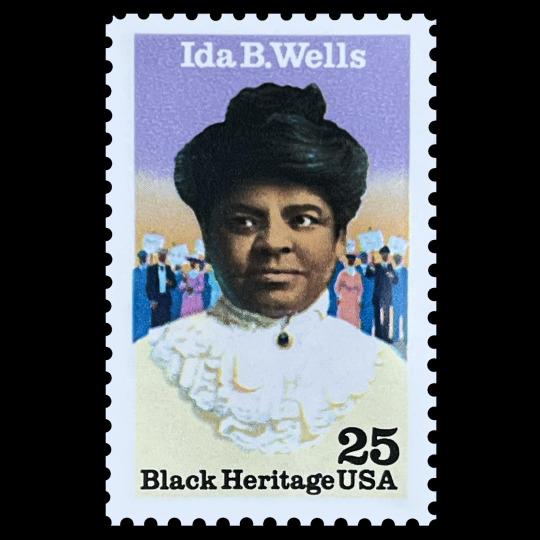
US postage stamp, 1990
"Ida B. Wells"
Scott #2442
Issued: February 1, 1990 - Chicago, IL
Quantity: 153,125,000
Designer: Jayne Hertko
Printed By: American Bank Note Co (Photogravure)
Ida Bell Wells-Barnett was an American investigative journalist, educator, and early leader in the civil rights movement. She was one of the founders of the National Association for the Advancement of Colored People.
#stamp#stamps#stamp collecting#Stamp Collection#Stamp Collector#mail#usps#postcard#postal#postage stamps#postage stamp#postage#Philately#Philatelic#ida wells#ida b wells#black heritage#civil rights#NAACP
5 notes
·
View notes
Text
One of the most unwavering activists in history.
1 note
·
View note
Text
youtube


In 2022, President Joe Biden officially signed the Emmett Till Antilynching Act and made lynching a hate crime. This occurred 124 years after Ida B. Wells-Barnett had lobbied Congress in an effort to have them pass an antilynching law. During the 1800s and 1900s, lynching was being used as a way for everyday people to take "justice" into their own hands. White men in this period deemed themselves judge, jury, and executioner which resulted in the persecution and unjust murder of several Black Americans in the Jim Crow South.
In her pamphlet, titled "Southern Horrors: Lynch Law in All Its Phases", Wells-Barnett uses her platform to dissect the justifications made in support of these lynchings such as many victims being deemed rapists in order to justify their murder. White owned newspapers reporting on the instances consistently deemed the lynching victims as criminals while in the research conducted Wells-Barnett deems it to be mere lies. She comes to the conclusion that Black men were being falsely accused and lynchings were being done to continue the oppression of the formerly enslaved.
0 notes
Text
Headliners
Fredrick Douglas: Born Frederick Augustus Washington Bailey in 1818, early in life Douglass was an abolitionist and fought for the freedom of black people under slavery. Then later in life him along with Elizabeth Cady Stanton and Susan B. Anthony founded the American Equal Rights Association in 1866, to forward the suffrage movement after the civil war
Ida B. Wells:Born Ida Bell Wells-Barnett,she was a journalist born in 1862 aimed to empower black women to involve themselves in politics, Founder of the Alpha Suffrage Club in Chicago, Illinois.
Fannie Lou Hamer:Born Fannie Lou Townsend Hamer she was a political activist born 1917, co-founder of the Mississippi Freedom Democratic Party (MFDP), and was apart of Mississippi's first integrated delegation.
0 notes
Text
Ida B. Wells Life
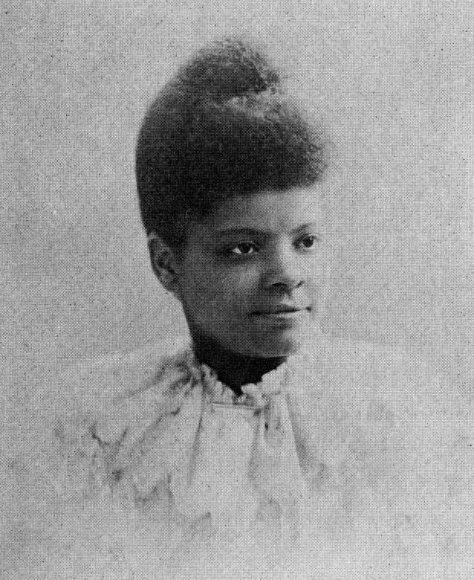
Ida B. Wells was a prominent African American investigative journalist, educator, and civil rights activist. Here are some key facts about her life:
Birth and Early Life:
Ida Bell Wells-Barnett was born on July 16, 1862, in Holly Springs, Mississippi, during the Civil War.
She was born into slavery but became an orphan at the age of 16, after her parents died in a yellow fever epidemic.
Educational Achievements:
Despite the challenges she faced, Ida B. Wells attended Rust College and later became a teacher.
Journalistic Career:
Ida B. Wells gained national attention as a journalist and editor for several black newspapers, including the Memphis Free Speech and Headlight.
She wrote extensively on issues such as civil rights, women's suffrage, and the injustices faced by African Americans.
Anti-Lynching Activism:
One of Ida B. Wells' most significant contributions was her fearless and pioneering work in exposing and challenging the widespread practice of lynching in the United States.
Her investigative journalism documented and denounced the false accusations against African Americans that often led to lynchings.
The Red Record:
In 1895, Ida B. Wells published "The Red Record," a groundbreaking pamphlet that compiled statistics and details about lynching in the United States. It laid bare the brutality and racism behind these acts.
Founding the NAACP:
Ida B. Wells was one of the founding members of the National Association for the Advancement of Colored People (NAACP) in 1909.
Women's Suffrage:
Wells was an advocate for women's suffrage and worked alongside prominent suffragists. However, she was often marginalized in the suffrage movement due to racial prejudices.
Legacy and Recognition:
Ida B. Wells is remembered as a trailblazer in the fight against racial injustice and an early leader in the civil rights movement.
The Ida B. Wells-Barnett Museum is located in Holly Springs, Mississippi, in her honor.
Personal Life:
Ida B. Wells married Ferdinand L. Barnett, a lawyer, editor, and civil rights activist, in 1895. She became Ida B. Wells-Barnett after her marriage.
Death:
Ida B. Wells-Barnett passed away on March 25, 1931, in Chicago, Illinois. She left behind a powerful legacy of courage, activism, and advocacy for justice.
Ida B. Wells remains an inspiration for her courage in the face of adversity and her relentless pursuit of truth and justice.
1 note
·
View note